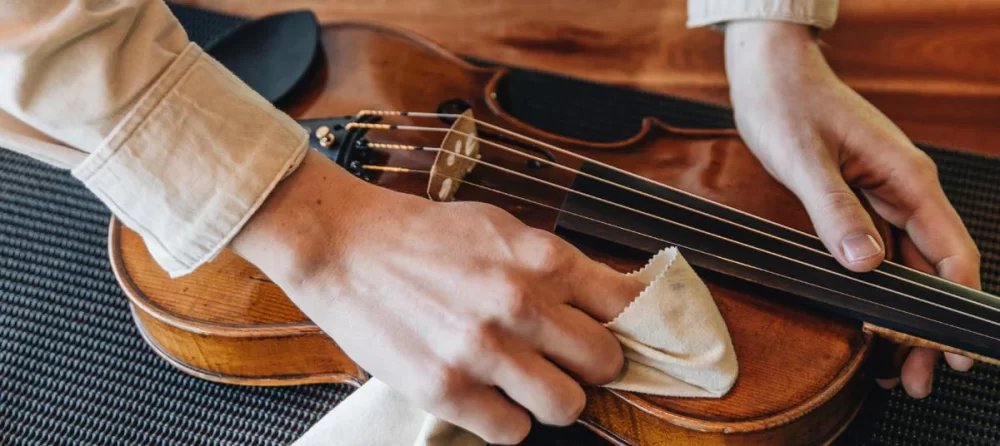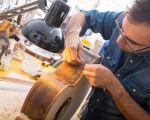
How to Clean and Maintain Your Violin: Essential Tips for Longevity
As a violinist, one of the most important aspects of owning a violin is making sure it stays in top shape for years of practice and performance. Many of us focus so much on improving our technique that we forget about the importance of caring for our instrument. If you want to keep your violin sounding as beautiful as the day you bought it, maintaining it properly is crucial. In this article, I’m going to share with you the best tips and methods to clean and maintain your violin, ensuring its longevity and quality performance.
1. Why Is Violin Maintenance So Important?
First, let’s talk about why maintenance matters. Violins, like all string instruments, are made of delicate materials that require special care. The wood, the varnish, the strings, and the bow all need attention to maintain their quality and sound. If you neglect your violin, the wear and tear can significantly affect its tone, playability, and even its structural integrity. I’ve seen it happen too many times, where a small chip in the varnish or accumulated rosin on the strings leads to poor sound quality or worse—damage that could have been avoided with regular maintenance.
So, how can we ensure that our violins stay in great shape? Let’s dive into some essential cleaning and maintenance tips that you can incorporate into your routine.
2. Regular Cleaning After Every Play
One of the most important things you can do for your violin is clean it after every practice session or performance. The main culprit in causing damage to the violin is rosin buildup, which occurs from bowing the strings. Over time, rosin can accumulate on the violin's body, fingerboard, and strings, making your violin look dusty and affecting the tone quality. I remember when I first started learning the violin; I didn’t realize how much rosin could build up, and I would notice a squeaky sound when I played. I quickly learned that regular cleaning could prevent that!
Here’s how I clean my violin after every session:
- Take a soft, lint-free cloth and gently wipe down the entire surface of the violin. Focus on areas where the rosin tends to accumulate, such as the body, scroll, and fingerboard.
- If you notice a more significant buildup of rosin, use a soft cloth with a bit of water to wipe it off. Make sure the cloth is damp, not soaking wet, as moisture can damage the wood.
- Don’t forget to wipe down the bow as well! Run a clean cloth over the bow stick and the hair to remove excess rosin and dirt.
It’s a simple routine, but it goes a long way in maintaining the look and sound of your violin.
3. Deep Cleaning and Maintenance Every Few Months
While cleaning your violin after every use is essential, you also need to perform a more thorough cleaning every few months to ensure that your instrument stays in excellent condition. This deeper cleaning is not just about wiping the surface—it's about checking the overall health of your violin. When I first started taking my violin maintenance seriously, I made it a habit to clean it deeply every three months. Here’s how I do it:
- Check the Strings: Examine the strings for any signs of wear, such as fraying or loose tension. If a string looks worn out, it's time to replace it. I always make sure to change my strings regularly to keep the tone bright and clear.
- Inspect the Fingerboard: The fingerboard is another area that needs attention. Gently use a fingerboard cleaner to remove any sticky residue or grime that can build up from playing. Be careful not to damage the varnish.
- Clean the Body: For a deeper clean, I use a specialized violin cleaner or polish. These products are designed to protect the varnish and wood while giving the violin a nice shine. I always apply the polish with a soft, clean cloth to avoid any abrasions to the surface.
- Check the Bridge and Soundpost: The bridge and soundpost are key to the violin’s sound. If they are misaligned, it can affect the quality of the music. If you notice any problems, it’s a good idea to take your violin to a professional luthier.
Once you’ve completed these steps, you’ll notice a significant improvement in your violin’s performance and aesthetics. The sound will be crisper, and the instrument will look as if it’s brand new!
4. Storing Your Violin Properly
Just as cleaning your violin is essential, so is storing it correctly. A lot of people make the mistake of leaving their violin out in a place where it can be exposed to dust, humidity, or even extreme temperatures. I’ve learned the hard way that a violin needs to be stored in a controlled environment to avoid damage. Here are some key storage tips:
- Use a Hard Case: Always store your violin in a good-quality hard case. This protects it from physical damage, dust, and temperature fluctuations. A soft case might be convenient, but it offers less protection in the long run.
- Avoid Extreme Temperatures: Violins should be kept at room temperature—never too hot or too cold. Extreme temperatures can cause the wood to crack or warp. I always make sure my violin is kept away from heaters or windowsills where the sun could damage it.
- Humidity Control: Wood is very sensitive to humidity changes, and high humidity can cause swelling, while low humidity can cause cracks. Using a small humidity control packet or a hygrometer in your violin case can help prevent these issues.
By storing your violin properly, you’re extending its life and ensuring that it will continue to produce beautiful music for years to come.
5. Professional Servicing
Even with the best cleaning and maintenance routine, there will come a time when you need to take your violin to a professional. Luthiers can perform advanced maintenance, such as adjusting the soundpost, fixing cracks, or setting up your violin for optimal playability. I always take my violin to a trusted luthier once a year for a check-up. They’ll also re-hair the bow if needed and make sure everything is in top condition. It’s a small investment that can make a huge difference in the sound and longevity of your violin.
Remember, keeping your violin well-maintained doesn’t have to be complicated. With a little effort and care, your violin will stay in perfect condition and continue to bring you joy for years to come.








